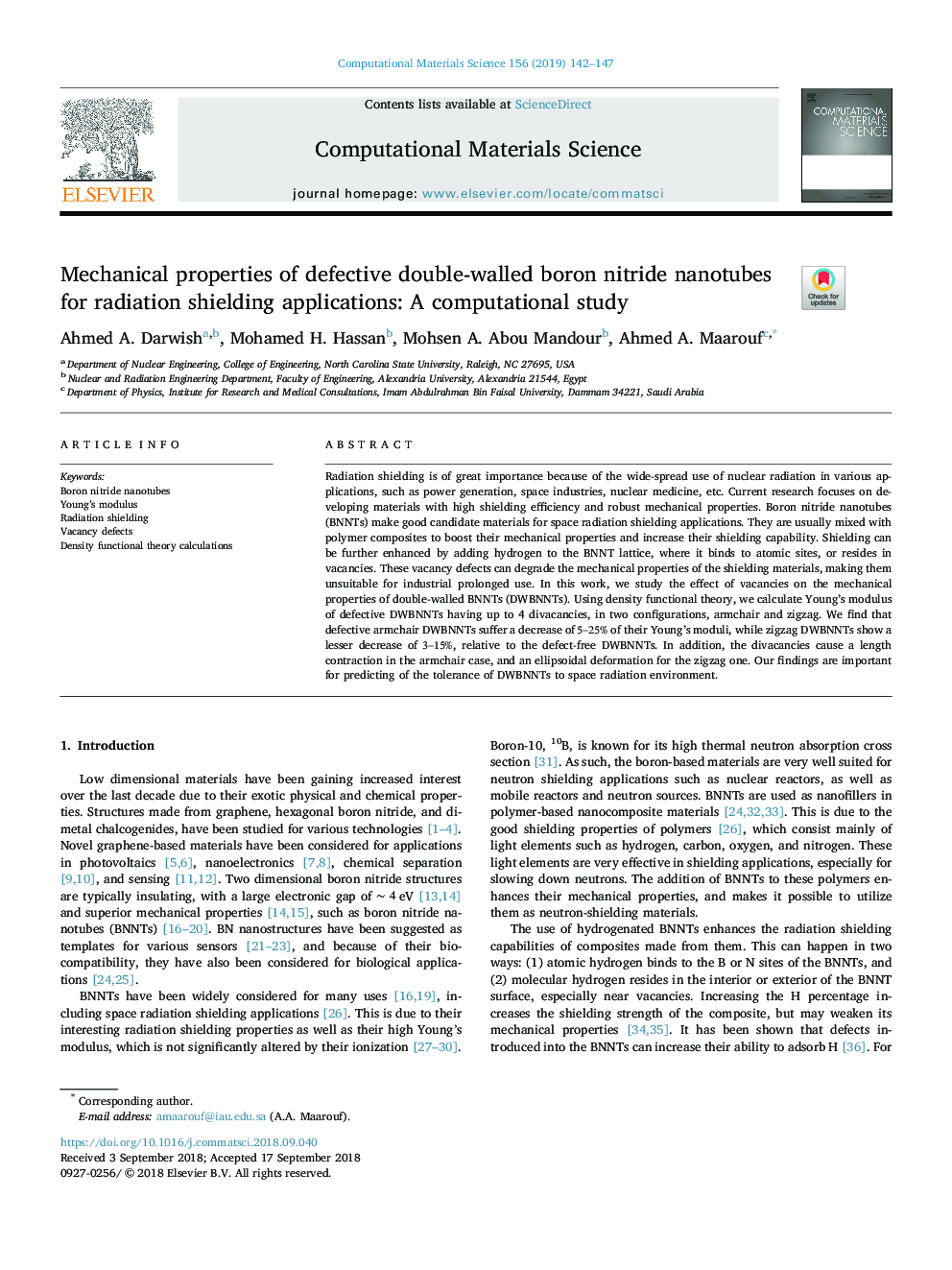| کد مقاله | کد نشریه | سال انتشار | مقاله انگلیسی | نسخه تمام متن |
|---|---|---|---|---|
| 11026647 | 1666364 | 2019 | 6 صفحه PDF | دانلود رایگان |
عنوان انگلیسی مقاله ISI
Mechanical properties of defective double-walled boron nitride nanotubes for radiation shielding applications: A computational study
ترجمه فارسی عنوان
خواص مکانیکی نانولوله های نیترید بور با ضخامت دو طرفه برای کاربردهای محافظتی تابش: یک مطالعه محاسباتی
دانلود مقاله + سفارش ترجمه
دانلود مقاله ISI انگلیسی
رایگان برای ایرانیان
کلمات کلیدی
نانولوله های نیترید بور مدول یانگا، محافظ تابش، نقص واگذاری محاسبات تئوری کاربردی تراکم،
موضوعات مرتبط
مهندسی و علوم پایه
سایر رشته های مهندسی
مکانیک محاسباتی
چکیده انگلیسی
Radiation shielding is of great importance because of the wide-spread use of nuclear radiation in various applications, such as power generation, space industries, nuclear medicine, etc. Current research focuses on developing materials with high shielding efficiency and robust mechanical properties. Boron nitride nanotubes (BNNTs) make good candidate materials for space radiation shielding applications. They are usually mixed with polymer composites to boost their mechanical properties and increase their shielding capability. Shielding can be further enhanced by adding hydrogen to the BNNT lattice, where it binds to atomic sites, or resides in vacancies. These vacancy defects can degrade the mechanical properties of the shielding materials, making them unsuitable for industrial prolonged use. In this work, we study the effect of vacancies on the mechanical properties of double-walled BNNTs (DWBNNTs). Using density functional theory, we calculate Young's modulus of defective DWBNNTs having up to 4 divacancies, in two configurations, armchair and zigzag. We find that defective armchair DWBNNTs suffer a decrease of 5-25% of their Young's moduli, while zigzag DWBNNTs show a lesser decrease of 3-15%, relative to the defect-free DWBNNTs. In addition, the divacancies cause a length contraction in the armchair case, and an ellipsoidal deformation for the zigzag one. Our findings are important for predicting of the tolerance of DWBNNTs to space radiation environment.
ناشر
Database: Elsevier - ScienceDirect (ساینس دایرکت)
Journal: Computational Materials Science - Volume 156, January 2019, Pages 142-147
Journal: Computational Materials Science - Volume 156, January 2019, Pages 142-147
نویسندگان
Ahmed A. Darwish, Mohamed H. Hassan, Mohsen A. Abou Mandour, Ahmed A. Maarouf,
